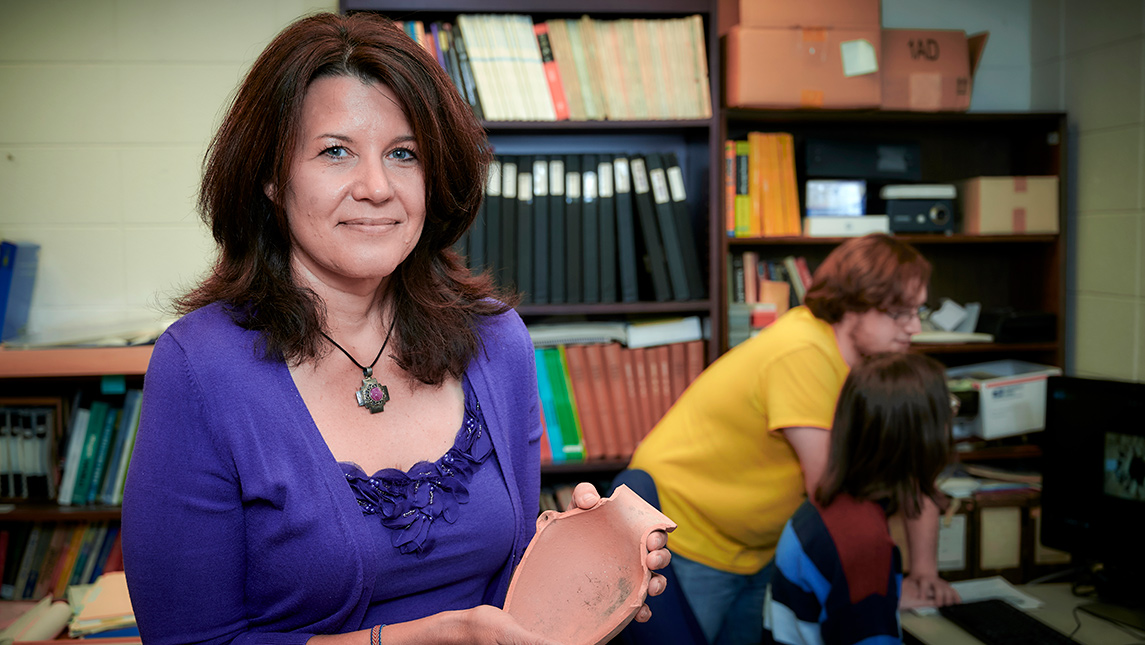Carrots and sticks.
That’s the metaphor used to describe how those in power motivate their subordinates through reward, punishment, or a combination of both.
According to UNC Greensboro’s Dr. Donna Nash, the ancient Wari empire was highly skilled at using carrots to control the people they conquered.
And in this case, the “carrots” consisted of festivals and chicha, a corn-based fermented beverage.
Throughout her career, the associate professor and head of the Dept. of Anthropology has been interested in how ancient empires expanded and conquered other groups. She’s focused on the Wari – the first ancient empire to emerge in South America – which expanded around 600 AD and lasted until 1000 AD.
The Wari’s system of record keeping has yet to be deciphered, which means that the empire can only be studied through archaeology. Therefore, Nash spends every summer and winter break in Moquegua, Peru, at the Cerro Baúl excavation site, uncovering artifacts and working to piece together information about this prehistoric group.
Currently, Nash is focused on the role of chicha in Wari governance.
“Rather than establishing military outposts and forcing people to go along with the empire, it seems as though the Wari held festivals and served chicha … so that people would want to participate in the empire rather than rebel,” she said.
Nash and her colleagues have uncovered a large-scale brewery at Cerro Baúl. She explains that the Wari elite hosted extravagant parties for local leaders – and served copious amounts of chicha – to keep conquered groups happy and agreeable.
While a lot of her recent work centers on chicha, Nash has studied various facets of the brewery’s production, in addition to the ceramics that were used to serve the alcoholic beverage.
Recent research findings have been published in several high-profile journals, such as the Journal of Anthropological Archaeology, Journal of Anthropological Research, and Sustainability. Last year, Nash’s research was also highlighted in Discover Magazine. Her collaborators are Patrick Ryan Williams of the Field Museum in Chicago; Susan deFrance of University of Florida; Joshua M. Henkin of University of Illinois at Chicago; and Ruth Ann Armitage of Eastern Michigan University.
Nash also works closely with UNCG students. This past summer, 14 students participated in her archeological field school, which she leads each summer to study the artifacts and sites affiliated with Cerro Baúl. Often, the students who participate in the field school come back to campus in the fall and work alongside Nash in her Latin American Archeology Lab.
Why is studying ancient empires like the Wari so important?
Nash explains that empires are extensive polities, and that we have a number of expansive polities in the world today.
“By understanding how empires impacted local people as they expanded, we can get a sense of what the impacts today and in the future will be on people who experience this kind of expansion.”
Story by Alyssa Bedrosian, University Communications
Photography by Martin W. Kane, University Communications
Videography by Alexandra McQueen, University Communications



